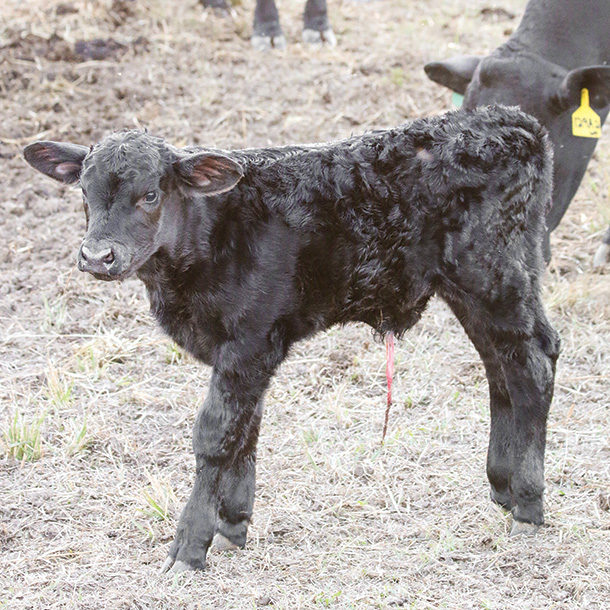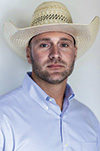Those interested in finishing calves generally want to fatten them up by the end of April to capitalize on the seasonal high in the fed-cattle market, as well as to ship the whole pen before summer heat sets in. Many cow-calf producers considering retained ownership do not realize, however, that planning should have started well before weaning day.
The key to marketing calf-feds earlier is a cow herd management and calf nutrition plan aimed at weaning larger, heavier and relatively older calves. It is well established that the biggest calves at weaning will be the first to market in spring.
Conception to birth
The primary factors that influence calf-fed market timing are calf age and genetics. Coupled with maturity, calves that exhibit a higher genetic merit and better nutritional background are more apt to reach market weight by 13 to 15 months old. As such, if the goal is to market calves on May 1, cow-calf producers need to target an average calving date of March 1, assuming a 60-day calving window.
This approach will ensure that calves will be 13 to 15 months of age at slaughter, finishing them in a more favorable marketing window, given the proper management and feed program.
Cow nutrition can also influence the calf-fed marketing date. Due to fetal programming, the way cows were managed and fed during gestation will have a direct, long-term effect on the next calf crop. A well-balanced nutrition program – combined with a good health protocol – is vital to developing a calf that can perform to its full genetic potential.
Producers are often only focused on protein and energy throughout gestation, and while these factors are important, a balanced trace mineral program that utilizes organic trace minerals should not be overlooked.
Birth to weaning
Calving and weaning dates are important contributors for allowing calves to reach market before summer. Depending on their weaning weight, calves could require up to 240 days to transition from weaning to finish. Therefore, for calves to be ready for market on May 1, they need to be weaned in early September at the appropriate age and weight. Even with 240 days on feed, calves will require a well-managed health and feed protocol to hit the spring market.
Supplementing the cow and calf can pay off in the weaning phase by easing the transition from a grazing-based diet to a bulk delivered ration. Fortunately, throughout most of the Midwest, most spring-calving cow-calf pairs will be supplemented at some point from birth to weaning.
Whether this program includes supplementing through the spring months before turnout or in late season, when grass has dried up, the act of supplementation can train calves to come to a motorized vehicle for their next meal. This will help take their minds off of missing their mamas and onto eating much more quickly on weaning day.
Another effective method of reducing weaning stress is creep feeding. Cattle producers typically view creep feeding as a means of adding weight pre-weaning, but it can also serve as an excellent training method to get calves started on dry feed. Calves that are creep fed for more than 30 days prior to weaning will be well adapted to consuming pellets or grain from a bunk and will not be solely dependent on grass and milk.
Creep feed intake also stimulates production of the volatile fatty acid butyrate, which promotes rumen function and papillae development. This adaptation helps calves adjust to grain rations faster, since they are already consuming a higher-energy feed. Ideally, calves should reach a creep feed intake approaching 1% to 1.5% of their bodyweight prior to weaning.
Weaning to finish
Calf performance and death loss from weaning to finish are a primary concern when considering retained ownership and are directly related to nutrition and management. Producers finishing calves for the first time are encouraged to visit with their nutritionist and veterinarian to develop a plan to keep their calves on track for a May 1 finish. This plan should include feeding and bunk management, diet adaptations, implant and vaccination protocols, and pen maintenance.
A solid health program – coupled with a low-stress weaning period – is the backbone of calf immunity and helps position calves for success during the finishing phase. A good start will help eliminate issues, such as respiratory disease and coccidiosis, that can decrease performance and increase days on feed.
Diet changes are another source of stress as calves are stepped up on energy and transition from high-roughage to high-concentrate rations. Calf-feds should be started on a moderate-energy receiving ration for 14 to 28 days, which gives them time to establish consistent intake levels and transition through weaning stress.
Following the starting program, calves need to be stepped up on energy gradually, allowing both the animal and their rumen microbes to adjust to the higher starch load while also maintaining rumen health. High-energy diets present two unique challenges: a high starch content and a small particle size. Both of these factors are known to increase the risk of digestive upset if not carefully managed. Ration energy can be increased every three to seven days, with more days allowed on the highest-energy steps.
The timing of these changes is influenced by the experience level of the cattle feeder, feed acceptance and any calf health challenges, resulting in a minimum of six to eight weeks from entering the feedlot to the finishing ration. From then on, managing daily feed intakes through health and weather breaks is key to minimizing digestive upsets and maximizing performance.
Finishing rations are balanced to meet calf nutrient requirements for maximum gain. As dietary energy content increases, protein levels are held constant and are usually higher than those included in yearling cattle rations. This added fortification accounts for the increased protein requirements of younger growing/finishing calves – especially if growth-promoting implants are used to increase performance. A balanced trace mineral program will support calf health and performance.
Conclusion
Retaining ownership of calves from weaning to finish may be a foreign concept to some cattle producers, but it should still be considered as an option when the fed-cattle market provides a profit opportunity. For a retained ownership program to be feasible, advanced planning is necessary. Cow and sire genetics, herd nutrition, calving dates, weaning weights and calf age are all critical components that will contribute to success. All of these factors need to align, allowing calves to finish earlier and hit the seasonal “sweet spot” in the fed-cattle market.











